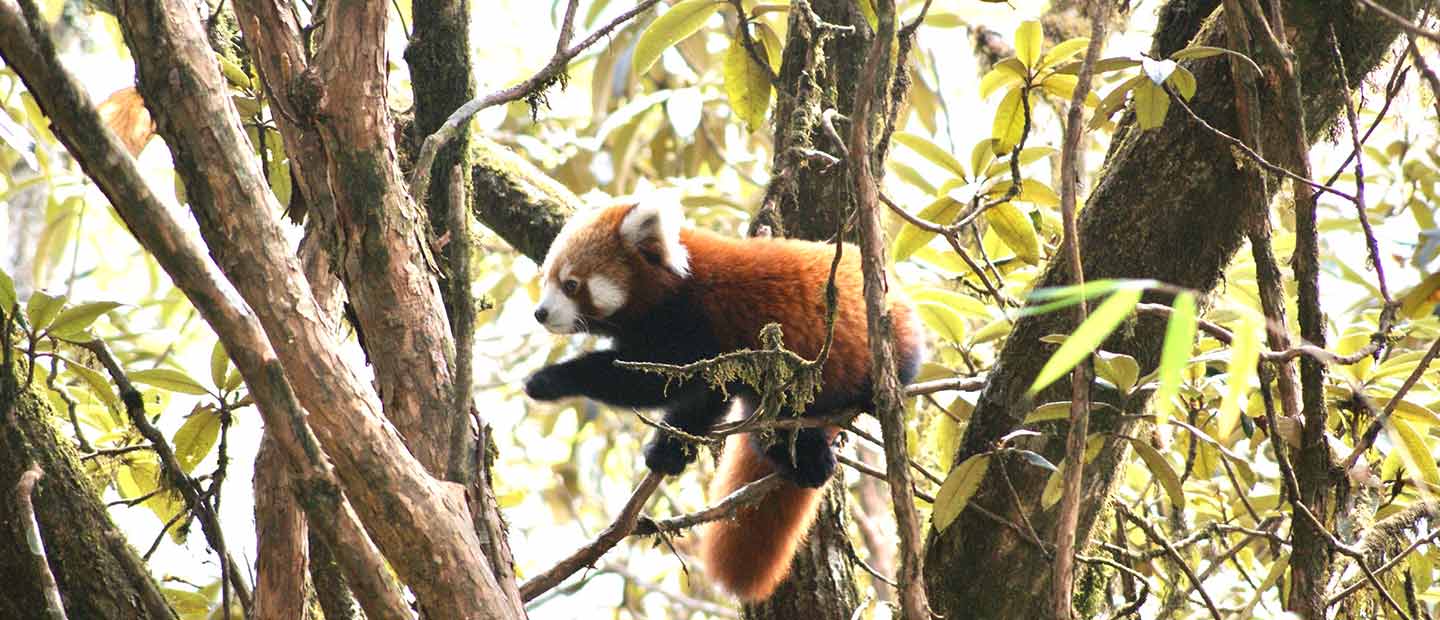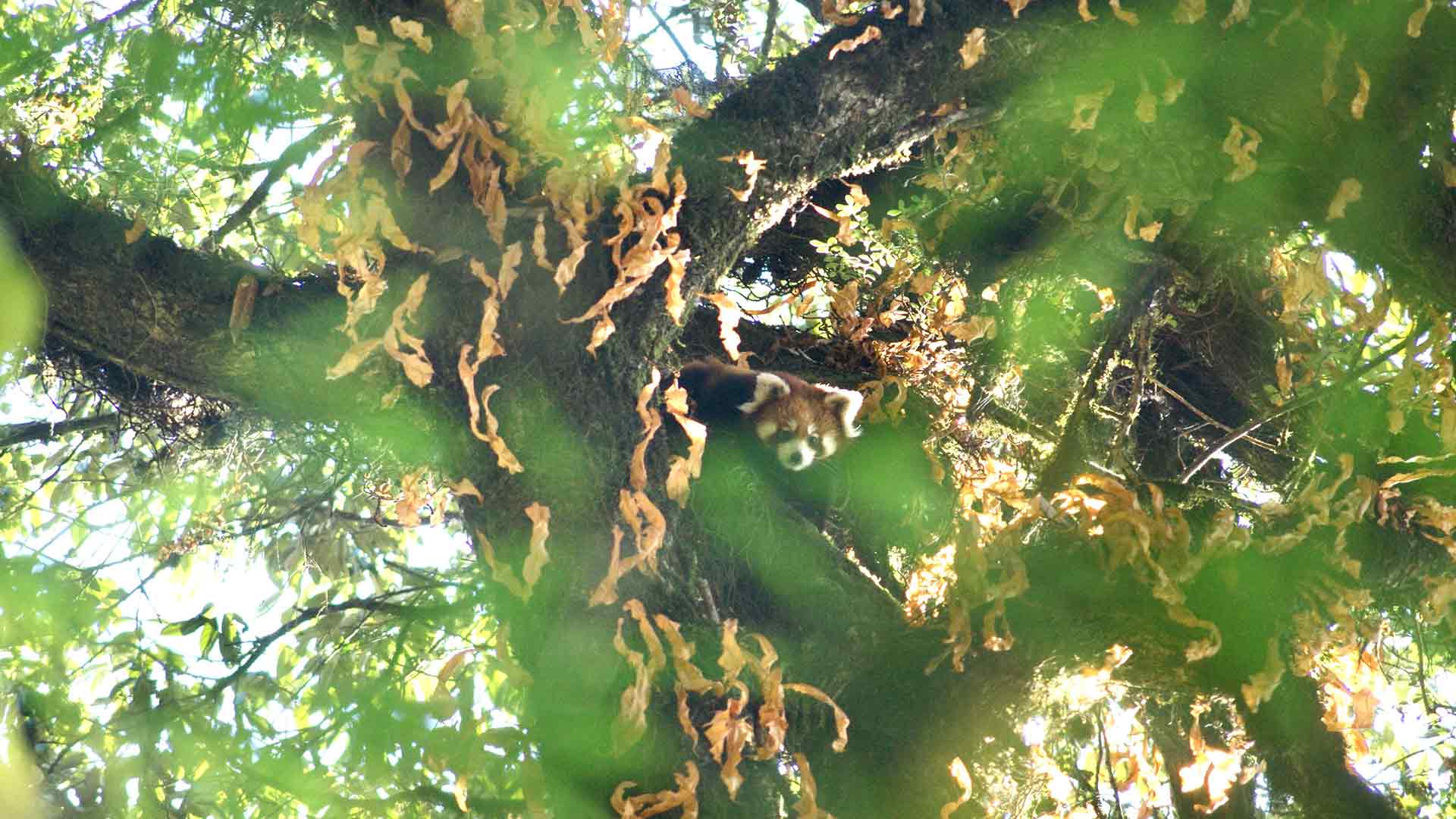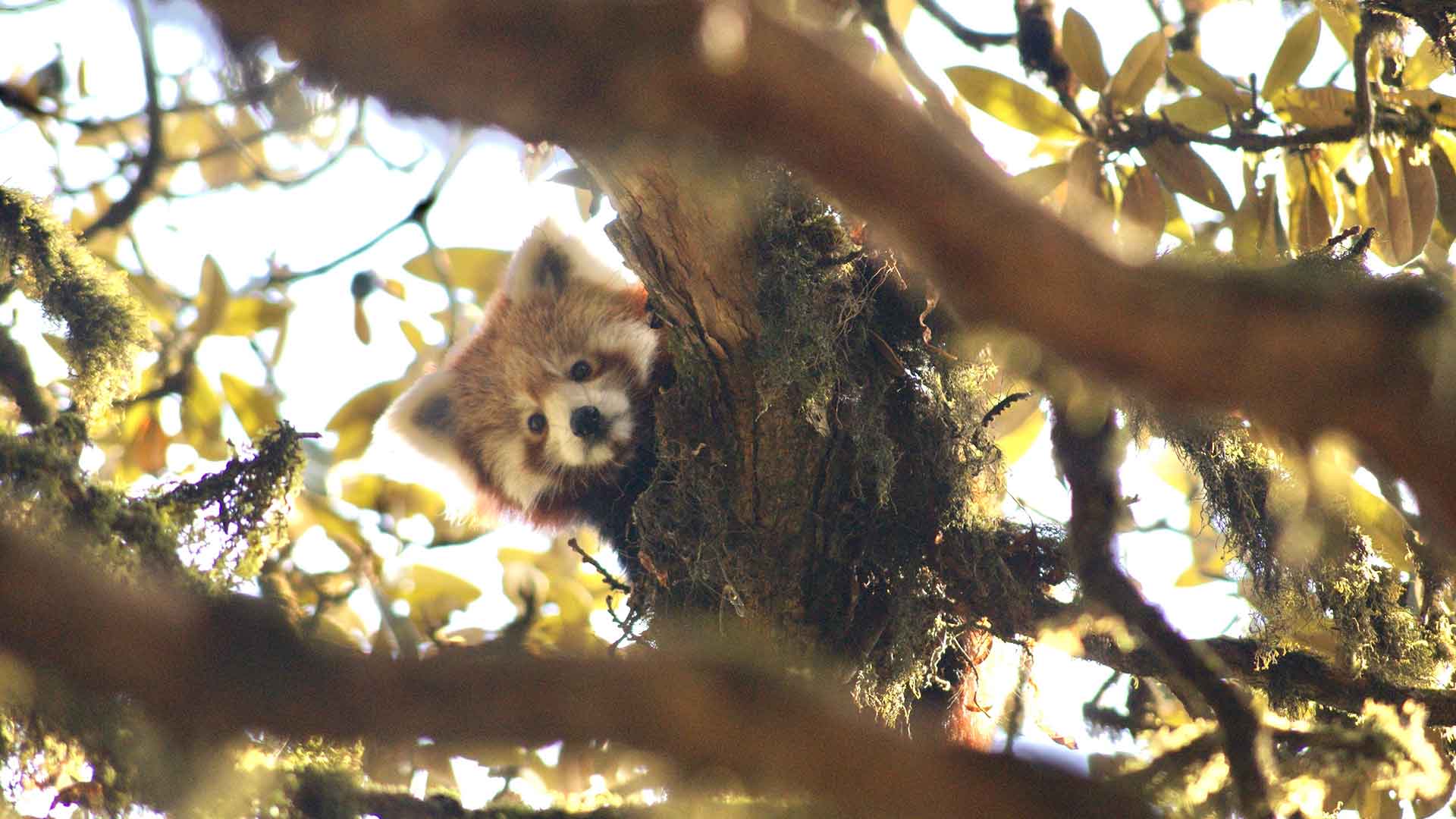Breathtaking, biodiverse and mountainous – the hill-topped forests of Nepal are home to one of the world’s most precious and endangered pandas, Ailurus fulgens, the red panda.
Red panda face several threats to their survival; deforestation, poaching and loss of habitat due to increasing human needs to name a few – but your zoo visits and donations help us to make a difference for red panda in the wild through our long and successful partnership with Red Panda Network. To date we’ve donated over $100,000 to support the work of their Forest Guardians who monitor red panda, maintain and restore their habitat, educate locals on the importance of red panda conservation and report poaching activity to local enforcement agencies. Their anti-poaching efforts alone have helped to decrease traps and snares in Eastern Nepal by 60% since 2015 – work we’re proud to support.
Over the years several Auckland Zoo staff have been to Nepal to learn more about this important work and earlier this month, carnivore keeper Kristin paid her own way there to visit our conservation partners and fulfill a lifelong dream of seeing red panda in the wild. This 12-day red panda eco-trip was created specifically for the zoo community and is one of three experiences Red Panda Network offer.






